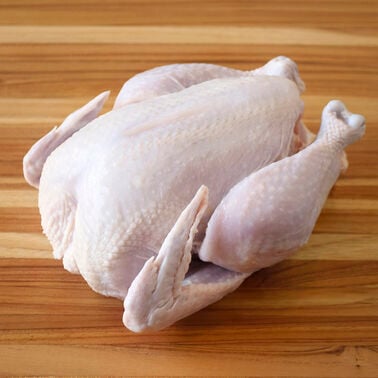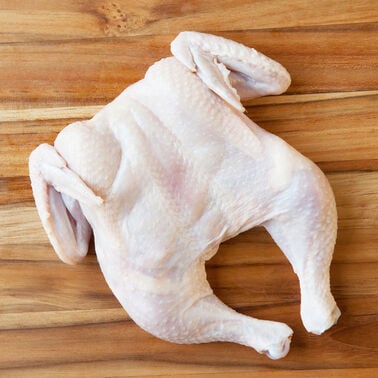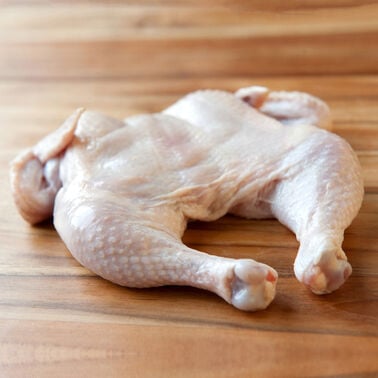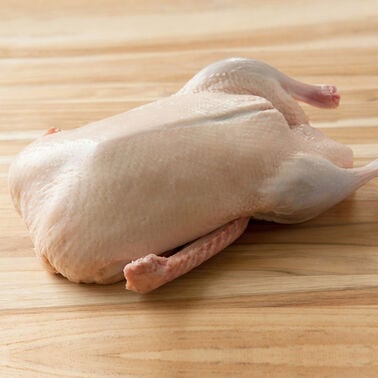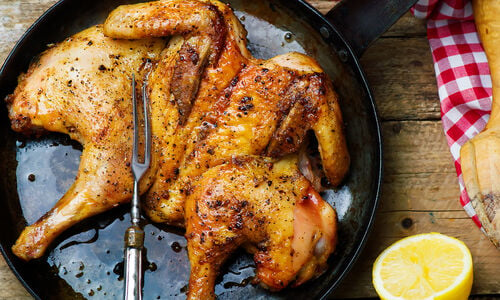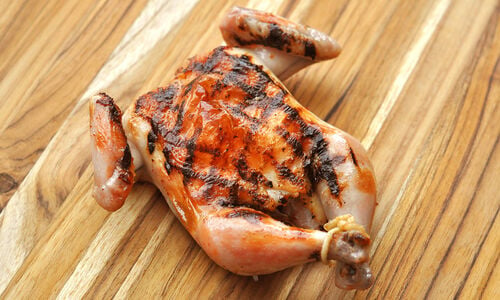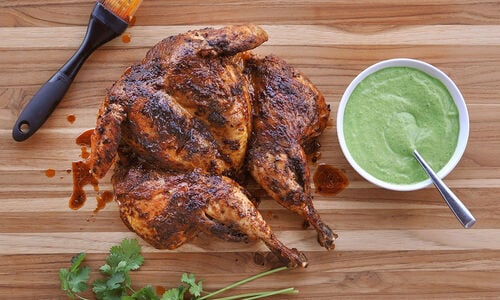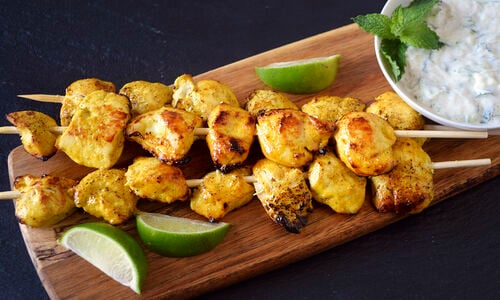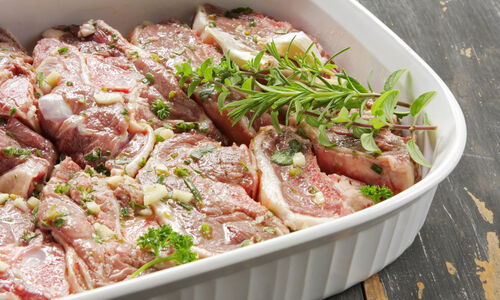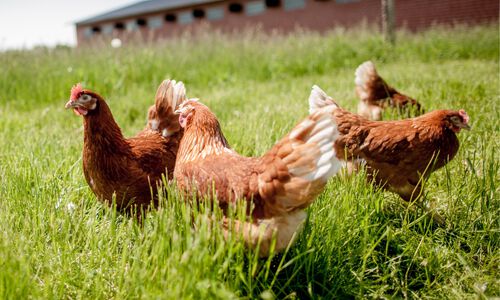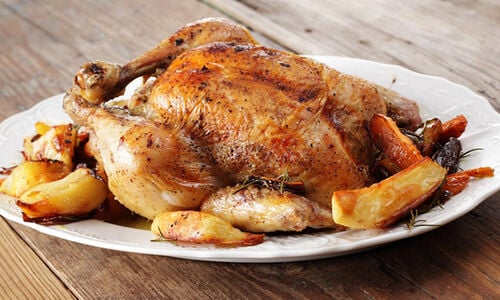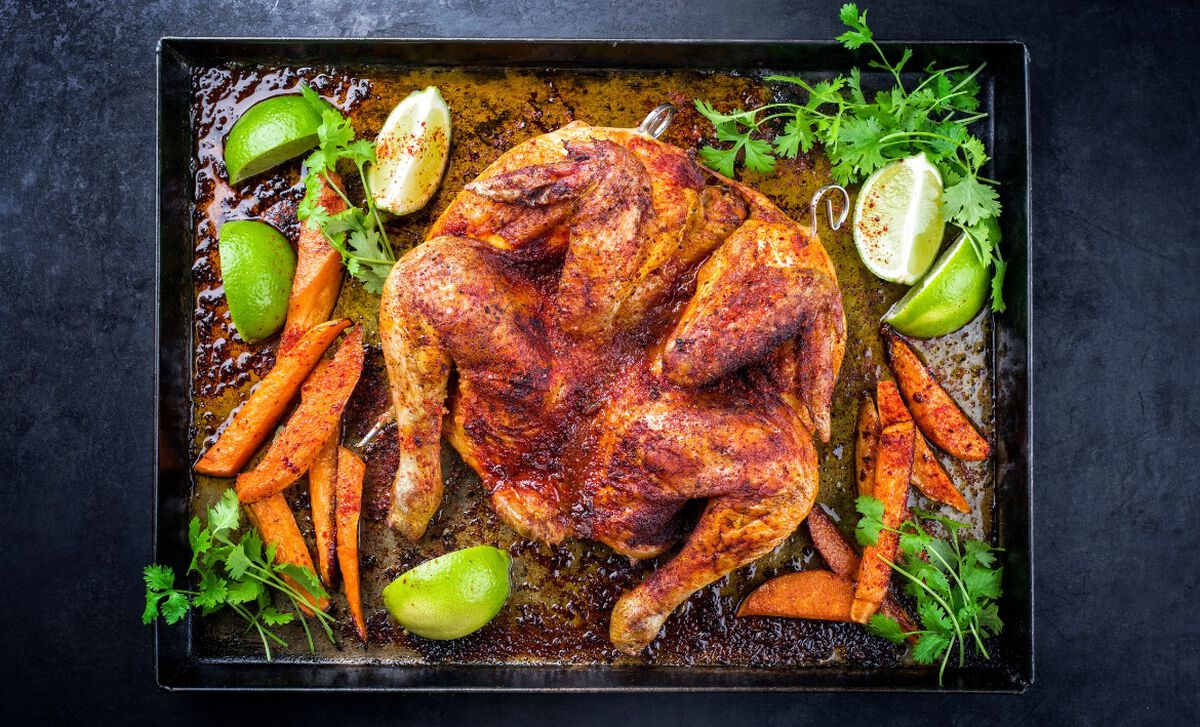
Prepping the Chicken
Start with a smaller chicken (about 3-3.5 pounds). To allow the chicken to lie flat, you will need to remove the backbone and the breast bone. To do this, first place the chicken breast side down on a cutting board. Using a pair of kitchen shears, cut along each side of the backbone. Remove and discard the backbone (or save it for making stock). Open up the bird slightly. At the top of the breast bone, you will see a small piece of white cartilage. Make a small vertical cut into the cartilage, about 1/2-inch long. Bend the chicken halves backward, and the breastbone will start to pop out. Finish removing the breast bone with a paring knife. The chicken should now be able to lie completely flat. Trim away any lumps of fat. You can choose to cut off the wings or tuck them under so they don’t burn.
Adding Flavor
Mix together a simple marinade of fresh herbs (e.g., rosemary, thyme, or tarragon), chopped garlic, olive oil, salt, and pepper. Rub over both sides of the chicken. Tuck some fresh herbs under the skin for a pretty presentation and even more flavor. Let the bird marinate in the refrigerator for anywhere from 30 minutes to overnight.
Cooking the Chicken
When ready to cook, begin by heating a large cast iron skillet over medium-high heat. Add enough olive oil to coat the bottom of the pan. When the oil is hot, place the chicken skin-side down into the skillet. If your skillet is not large enough, you may have to cut your chicken in half and cook it in two batches. All of the chicken skin will be in contact with the hot skillet, allowing it to crisp up. Weigh the chicken down with a couple of bricks wrapped in foil. If you don’t have bricks, use a very heavy pot or large cans. Wrapping the weights in foil will help with clean-up. Cook for 10 minutes, or until the skin is crispy and golden brown. Remove the weights and set aside, turn the bird over in the skillet, and transfer the skillet to the oven. Since the chicken has been pressed flat into an even layer, it cooks very quickly compared to a traditional roast chicken. Cook for another 15 minutes, or until the chicken is cooked through. To test for doneness, insert a thermometer into the thickest part of the meat; the thermometer should read 165 degrees F. Let the chicken rest for 10 minutes before carving and serving.
To add some smokiness, you could also cook the chicken on a grill. Start the bird on the hottest part of the grill skin-side down, weighing it down in the same way. After removing the weights and turning the chicken over, transfer to a cooler part of the grill to finish cooking.
Serve the chicken with a salad topped with shaved fennel and Parmigiano-Reggiano cheese and a loaf of fresh bread.
